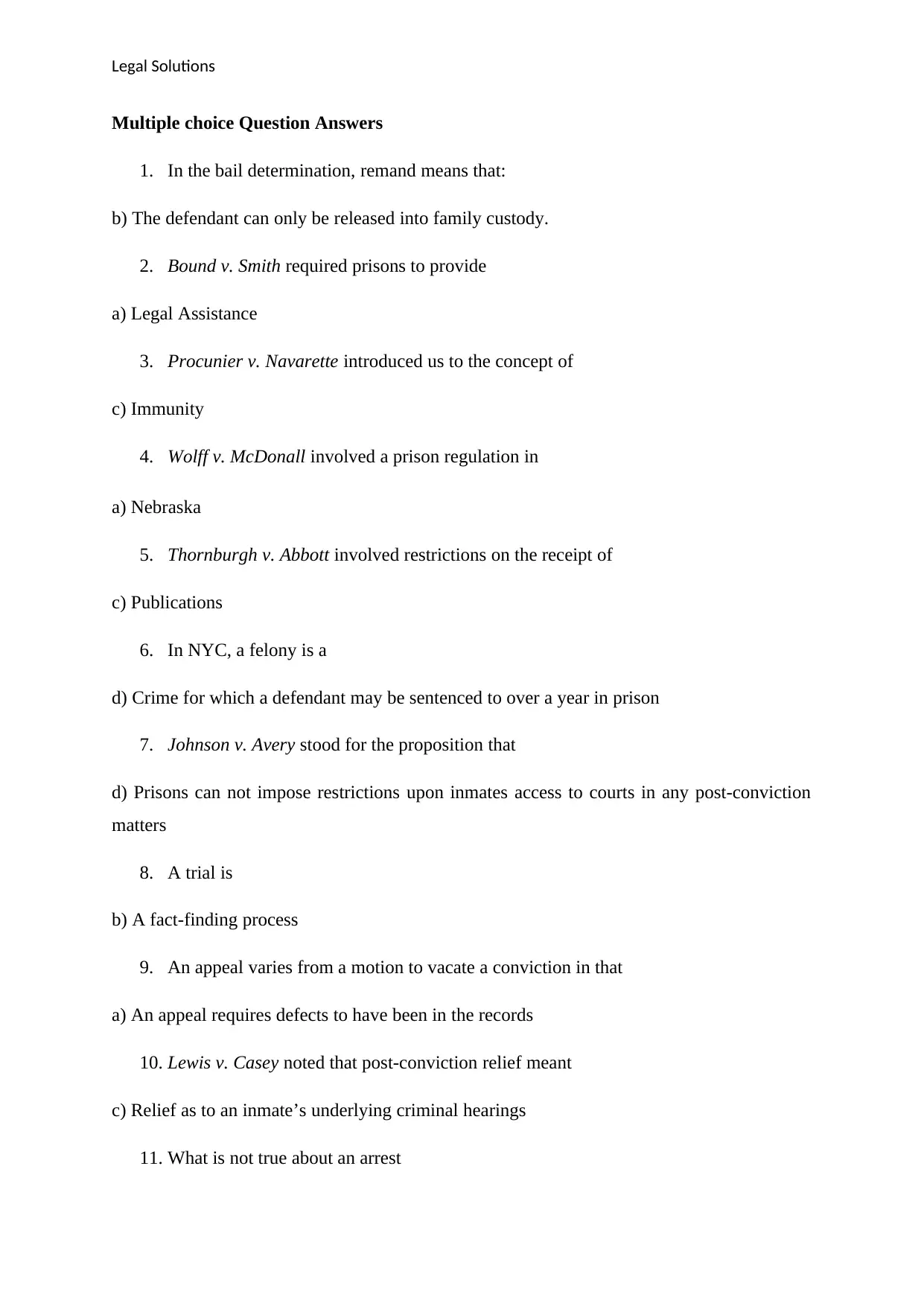Legal Solutions: Multiple Choice Questions Answers - Law, SystemJP
VerifiedAdded on 2022/09/14
|3
|366
|22
Homework Assignment
AI Summary
This assignment presents a series of multiple-choice questions and their corresponding answers related to various legal concepts. The questions cover topics such as bail determination, prison regulations, inmate rights, criminal procedure, and court cases. Specific cases like *Bound v. Smith*, *Procunier v. Navarette*, *Wolff v. McDonall*, *Thornburgh v. Abbott*, *Johnson v. Avery*, *Lewis v. Casey*, *Turner v. Safley*, *Bell v. Wolfish*, *Ex parte Hull*, *Beard v. Banks*, *Procunier v. Martinez*, and *Shaw v. Murphy* are referenced to illustrate legal principles. The assignment explores topics including the definition of a felony, the role of a trial, the conditions of bail, the implications of a guilty plea, and the function of a grand jury. It aims to test the understanding of legal terminology and the application of legal precedents.
1 out of 3






![[object Object]](/_next/static/media/star-bottom.7253800d.svg)